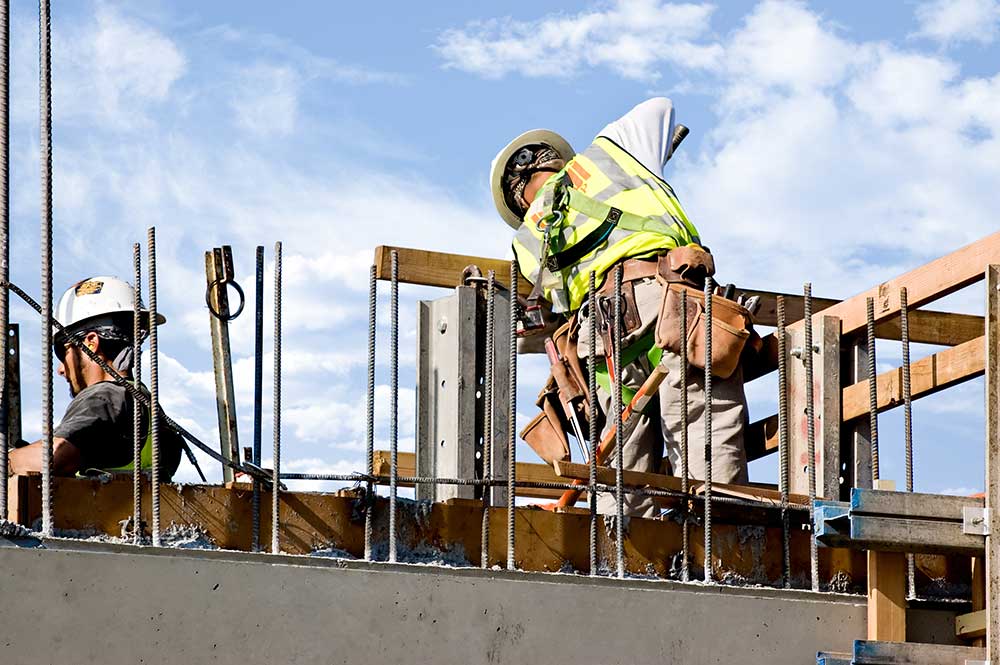Disclaimer: The information on our website is provided for general information purposes only. We make no representations or warranties of any kind, express or implied, about the completeness, accuracy, reliability, suitability or availability with respect to the website or the information contained on our website for any purpose. Any reliance on such information is therefore strictly at your own risk and we are not liable for any damages or losses arising out of or resulting from your reliance on any information contained on our website.
An ironworker is vital in the construction process as they are responsible in securing the iron or steel components outlined in a structures plans. Though they are called ironworkers, they also work with steel. Along with assisting in the construction in new buildings, they may also help reinforce the existing building’s structure with metal.
Watch a video to learn what an ironworker does:
How to Become an Ironworker
According to O*NET OnLine, most ironworkers reported to have a high school diploma as this career does not require a formal education. Most ironworkers will learn on-the-job through apprenticeship programs that can take 3 to 4 years to complete. When on-the-job, apprentices learn how to weld, read blueprints, construction techniques, and how to use the tools required to work with metal. Along with these tasks, they would also learn important safety precautions to take.
Job Description of an Ironworker
An ironworker uses blueprints to determine where the structural elements they are responsible for fit within a structure. Since metal is extremely heavy, they must also direct crane operators to lift and position the iron and steel metal pieces needed and then safely guide them to the desired location. Ironworkers attach iron and metal to other elements of a building using bolts and wire. They may also need to weld one metal object to another to ensure the connection is secure. This is a physically demanding job and these workers spend most of their time outside. These works may also work at great heights and must follow strict safety precautions to limit injury on-the-job.
Ironworker Career Video Transcript
It takes nerves of steel and muscles of iron, to work hundreds of feet above the ground, building structures that push up to merge with the clouds. Ironworkers have what it takes to help build the supporting structures for bridges, large buildings, and roads. Consulting sketches and blueprints to guide their work, ironworkers move prefabricated iron and steel by hand and signal crane operators to lift and position it.
Using a variety of tools, they cut and shape the iron and steel, then weld or bolt it into place. Getting these heavy materials into the right, the level position is key to structural integrity, and requires specialized tools to ensure it. It takes good balance and coordination, strength, and stamina to make it in any specialty in this field.
Structural iron and steel workers connect steel columns and girders for tall structures. Although wet, icy, or windy conditions can stop work, work is outdoors in most types of weather. With the risk of falls, cuts, and muscle strain, precautions must be taken. Reinforcing iron and rebar workers use steel and iron to strengthen concrete for highways, buildings, and bridges. They must be able to carry, bend, cut, and connect rebar quickly to help keep projects on schedule. Most ironworkers work full time in the construction industry and learn their trade through a 3-4 year apprenticeship. A high school diploma or equivalent is generally required.
Article Citations
Bureau of Labor Statistics, U.S. Department of Labor, Occupational Outlook Handbook, Ironworkers.
National Center for O*NET Development. 47-2221.00. O*NET OnLine.
The career video is in the public domain from the U. S. Department of Labor, Employment and Training Administration.

